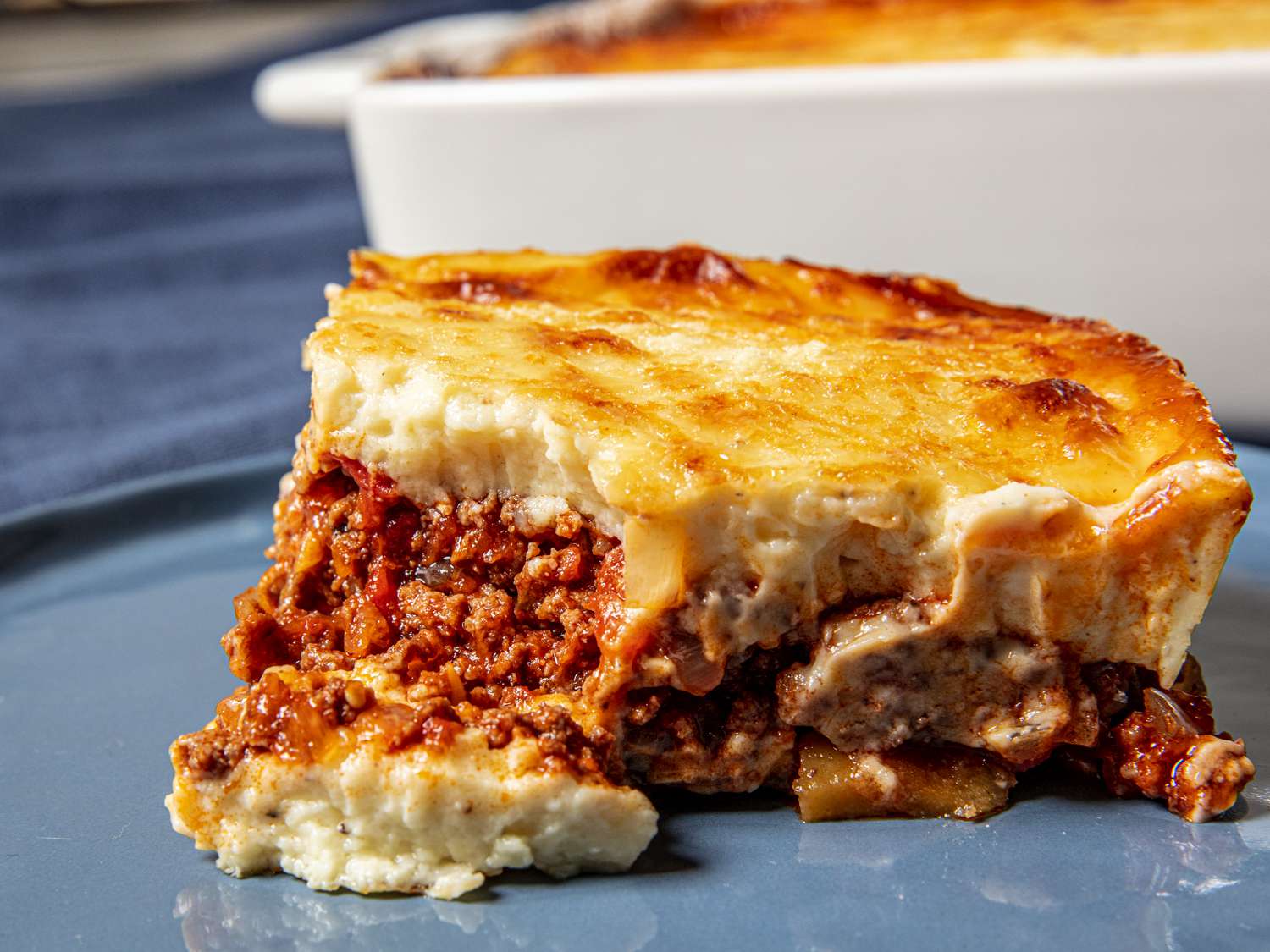
What is Moussaka? Moussaka is a delicious, layered casserole dish that hails from the Mediterranean, particularly Greece. It features layers of eggplant, ground meat (usually lamb or beef), and a creamy béchamel sauce. This hearty meal is often seasoned with spices like cinnamon and nutmeg, giving it a unique and comforting flavor. Why is Moussaka popular? Its rich taste and satisfying texture make it a favorite comfort food. Plus, it's versatile enough to be adapted for vegetarians by substituting the meat with lentils or other vegetables. Is Moussaka healthy? While it can be calorie-dense, using fresh ingredients and lean meats can make it a nutritious option. How do you serve Moussaka? Typically, it's served hot, often with a side salad or bread.
What is Moussaka?
Moussaka is a beloved dish from the Mediterranean region, especially popular in Greece and the Middle East. This layered casserole typically features eggplant, minced meat, and a creamy béchamel sauce. Let's dive into some fascinating facts about this delicious dish.
-
Greek Origin: Moussaka is most commonly associated with Greece, where it is considered a national dish.
-
Middle Eastern Roots: The dish has roots in the Middle East, where similar recipes have been made for centuries.
-
Layered Delight: Traditional moussaka is made with layers of eggplant, minced meat, and béchamel sauce.
-
Eggplant Star: Eggplant is the primary vegetable used in moussaka, giving it a unique flavor and texture.
-
Minced Meat: Ground lamb or beef is typically used in the meat layer, seasoned with spices like cinnamon and allspice.
Variations of Moussaka
Moussaka isn't just one recipe; there are many variations depending on the region and personal preferences. Here are some interesting twists on the classic dish.
-
Potato Layers: Some versions include layers of potatoes along with or instead of eggplant.
-
Vegetarian Moussaka: There are vegetarian versions that use lentils or chickpeas instead of meat.
-
Turkish Musakka: In Turkey, musakka is a simpler dish, often made without béchamel sauce and served with rice.
-
Balkan Influence: In the Balkans, moussaka often includes layers of zucchini and potatoes.
-
Cypriot Twist: In Cyprus, moussaka is made with pork and includes a layer of sliced zucchini.
Cooking Techniques
Making moussaka involves several steps and techniques to achieve the perfect balance of flavors and textures. Here are some key points.
-
Salting Eggplant: Eggplant slices are often salted and left to drain to remove bitterness and excess moisture.
-
Frying or Baking: The eggplant can be either fried or baked before layering to enhance its flavor.
-
Béchamel Sauce: The creamy béchamel sauce is made from butter, flour, and milk, and sometimes includes cheese.
-
Layering: Proper layering is crucial for the dish's structure, starting with vegetables, followed by meat, and topped with béchamel.
-
Baking Time: Moussaka is baked until the top is golden brown and bubbly, usually around 45 minutes to an hour.
Nutritional Facts
Moussaka is not only delicious but also packed with nutrients. Here are some nutritional aspects of this dish.
-
Rich in Protein: The minced meat provides a good source of protein.
-
Vitamins and Minerals: Eggplant is rich in vitamins and minerals, including vitamin C, K, and B6.
-
Calcium Boost: The béchamel sauce, made with milk, adds a good amount of calcium.
-
Fiber Content: Vegetables like eggplant and potatoes contribute to the dish's fiber content.
-
Healthy Fats: Olive oil, often used in moussaka, is a source of healthy monounsaturated fats.
Cultural Significance
Moussaka holds a special place in the hearts of many, not just for its taste but also for its cultural significance.
-
Festive Dish: Moussaka is often served during special occasions and family gatherings in Greece.
-
Symbol of Hospitality: Offering moussaka to guests is seen as a gesture of hospitality in many cultures.
-
Culinary Heritage: The dish represents the rich culinary heritage of the Mediterranean and Middle Eastern regions.
-
Modern Adaptations: Chefs around the world have created modern adaptations of moussaka, incorporating local ingredients and techniques.
-
Global Popularity: Moussaka has gained popularity worldwide, with many restaurants offering their own versions of the dish.
Moussaka: A Culinary Delight
Moussaka isn't just a dish; it's a journey through history and culture. This layered casserole, rich in flavors and textures, has roots in the Mediterranean and Middle Eastern regions. Each bite tells a story of tradition, from the creamy béchamel sauce to the savory meat filling and tender eggplant slices.
Whether you're a seasoned chef or a home cook, moussaka offers a rewarding cooking experience. It's a dish that brings people together, perfect for family gatherings or special occasions. Plus, it's versatile enough to accommodate various dietary preferences, from vegetarian to gluten-free options.
So next time you're looking for something hearty and comforting, give moussaka a try. You'll not only enjoy a delicious meal but also connect with a piece of culinary history. Happy cooking!
Was this page helpful?
Our commitment to delivering trustworthy and engaging content is at the heart of what we do. Each fact on our site is contributed by real users like you, bringing a wealth of diverse insights and information. To ensure the highest standards of accuracy and reliability, our dedicated editors meticulously review each submission. This process guarantees that the facts we share are not only fascinating but also credible. Trust in our commitment to quality and authenticity as you explore and learn with us.
